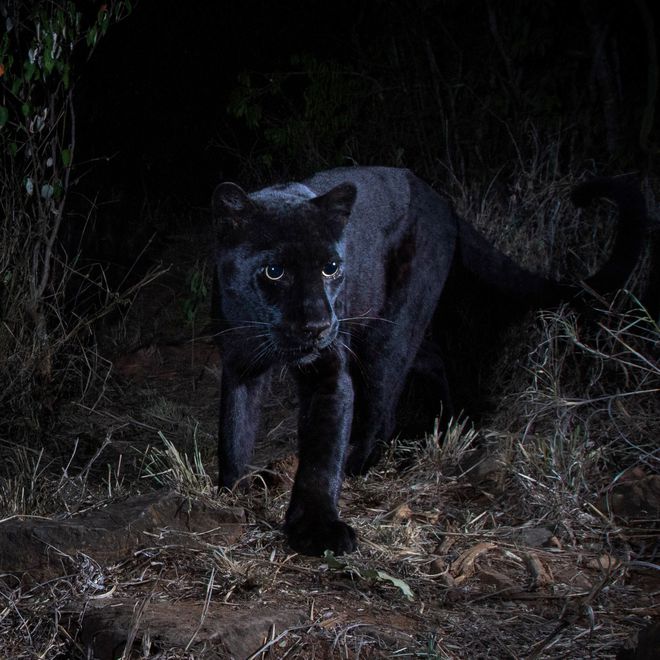By Winnie Kamau
The Data collected by Scientists shows the existence of Black Panthers in Kenya. In a Report dubbed Mapping black panthers: Macroecological modeling of melanism in leopards (Panthera pardus) published on the Peer-reviewed Open Access Journal shows there are 67 Melanistic Leopards which have been seen in various parts of the world mainly in Malaysia and Thailand.
The Data that was published online in 2017 from the Panthera pardus location records shows five of Leopards from Kenya, South Africa, and Iran are said to be Doubtful melanistic Black Panthers.
Speaking to the media during the launch of the Africa Protected Areas Congress (APAC), the Permanent Secretary of State Department of Wildlife, Dr. Margaret Mwakima and the Acting Director-General of Kenya Wildlife Services, Prof. Charles Musyoki refuted claims of a Black Panther sited in Nanyuki, Kenya.
Dr. Mwakima said it was not a Black Panther but a melanistic and albinistic occurrence on wildlife found in Kenya and the world. Prof. Musyoki said it was a normal siting that has always been seen among the Leopards found in the various parts of Kenya.
This comes after a buzz was created by International media houses like CNN, Washington Post, and others through a report saying a Photographer had captured the pictures of a Black Panther.
The rare Black Panther iages that circulated widely on Social Media sites like Twitter are said to have been captured by Burrard Lucas in Loisaba Conservancy in Laikipia, Kenya.
Photographer @willbl captures new images of a rare black leopard, also known as a black panther, in Kenya. pic.twitter.com/8YLmNFhb87
— ernesto veles (@erveza) February 14, 2019
Black panther caught on camera in Kenya https://t.co/6KkLE6rmLf #natureisawesome
— Influencerspain (@cesarantonio48) February 17, 2019
Many Kenyans on Twitter reacted to the story as the said Black Panther is not cited every 100 years but had been seen less than 7 years ago through the lenses of a Kenyan Photo Journalist, Phoebe Okal of the Nation Media Group in 2013.
The Black Panther has been living in Kenya for many years. Am sure the people in Laikipia saw it first, but then the Mzunye put some cameras, presented evidence and voila! We have discovered the #BlackPanther
in Africa…….. pic.twitter.com/9RHJh5dQV1— MwanikiE🆖️🇰🇪🇺🇬🇿🇦🇪🇷 (@Ngithy) February 14, 2019
Another panther spotted in Laikipia https://t.co/EyIes505ku via @dailynation
First photographed by Phoebe Okall, my colleague, in 2013.— Annie Njanja (@NjanjaAnnie) February 13, 2019
[BUSINESS] Another rare black Leopard spotted in Laikipia, Kenya: Extremely rare black leopard sighted in Laikipia a after a similar discovery was recorded by Nation photojournalist Phoebe Okall in 2013. https://t.co/22CSDkVfCG
— Breaking News (@News_Kenya) February 14, 2019














